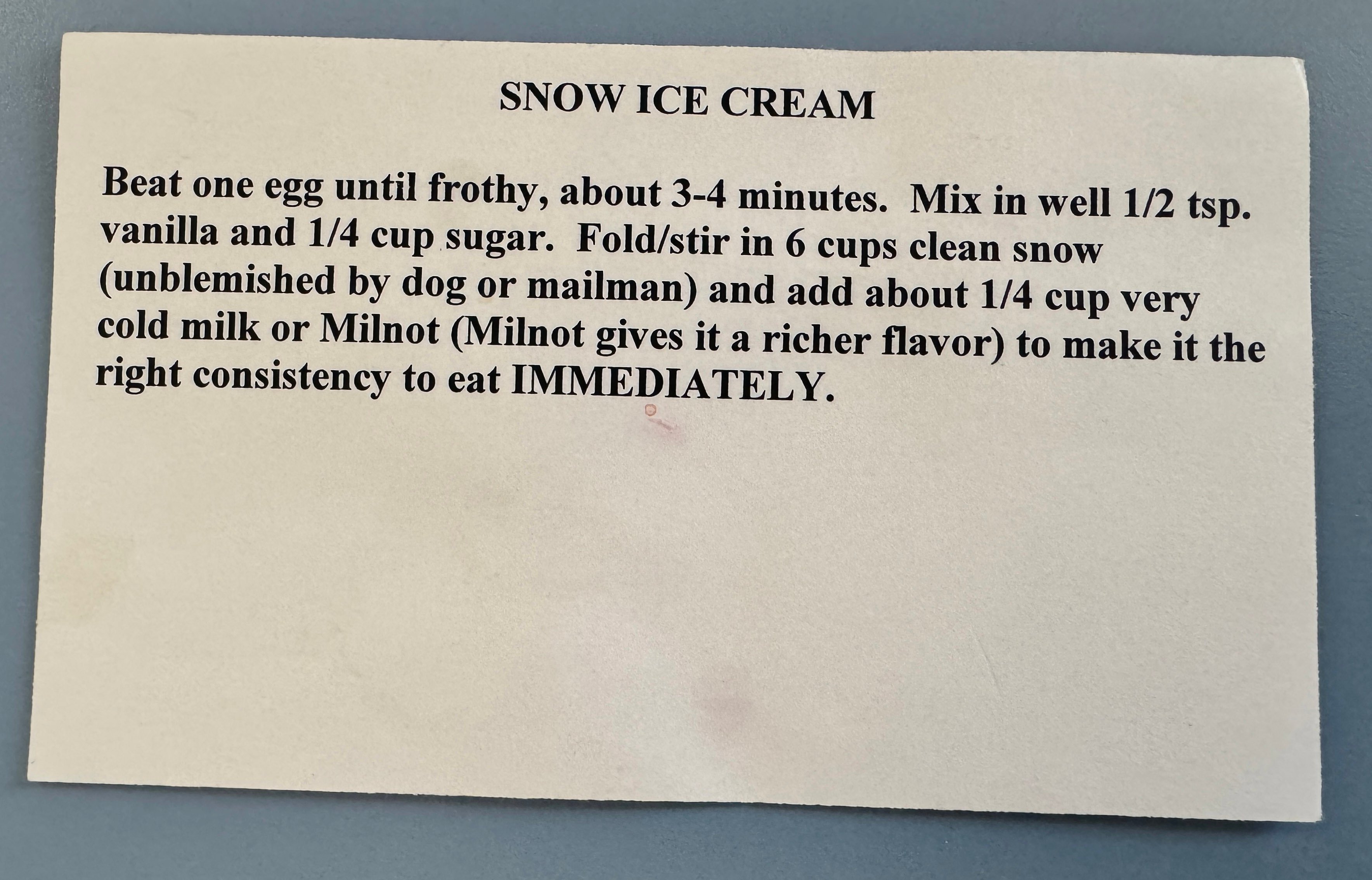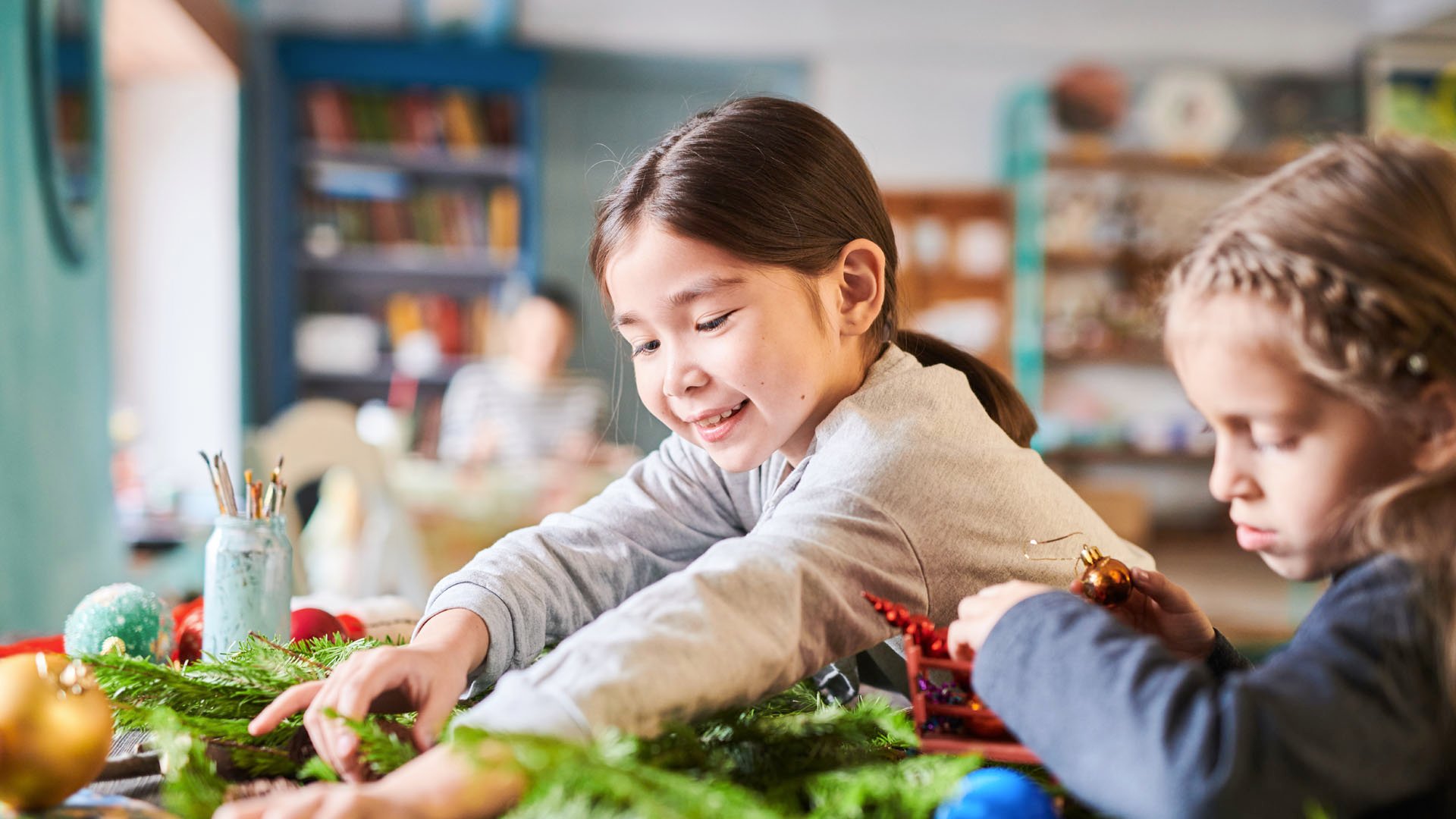Winter break. The children are home, the weather might be less than ideal, and the dreaded words "I'm bored!" are inevitably on the horizon. But fear not! This break can be a wonderful opportunity for learning and creating lasting memories with your children and the perfect time to harness the transformative power of play and discovery.
A Proven Favorite: Art in All Seasons
Art is a fantastic way for children to express themselves and develop important skills like fine motor coordination and color recognition. A long sheet of butcher paper at the "children's' table" during holiday gatherings can become a collaborative masterpiece with crayons, markers, or colored pencils. Let their imaginations run wild!
And who can resist the sensory delight of "snow painting"? Mix shaving cream with white paint to create a fluffy, snowy texture. Kids can use their hands, brushes, or even toys to create winter scenes. Another fun and easy activity is cotton ball snowflakes: Glue cotton balls onto paper plates to create fluffy snowflakes.

Remember, the process of creation is the most important thing. As children engage in these activities, talk to them about the process. What does the paint feel like? How does the salt taste? How is this glue stick different than liquid glue? These conversations help children make connections and learn about the world around them.
For more inspiration and guidance on process art, check out "Art with Anything" by MaryAnn Kohl, "Time to Create" by Christie Burnett, and "Creative Investigations in Early Art" by Angela Eckhoff, PhD. These books offer many engaging art activities that will spark your child's creativity.
The Joy of Reading Aloud
Reading aloud is a cherished family tradition. Share books reflecting your family's holiday traditions, or revisit your childhood favorites. Even older children enjoy taking turns reading aloud from books the whole family can enjoy.
Make it a cozy ritual. Snuggle up on the couch with a warm blanket and let your voices transport you to different worlds. For inspiration and tips on making reading aloud fun, check out "Time For a Story" by Amy Brooks Read and Saroj Nadkarni Ghoting.
Sneaky Math and Science
You don't have to turn winter break into a schoolwork marathon. But we can sneak in some learning disguised as fun! Involve your child in everyday tasks like setting the table ("Let's count out three plates!") or putting away toys ("How many cars did we find?").
Sorting is a fantastic activity – start simple with colors, then move on to shapes, sizes, and more. One of my daughter's favorite activities, starting around 18 months or so, was sorting. As she got older it got more complex, but it was as simple as collecting a few objects from around the house in two different colors, or three, and asking her to select the red bird and put it in a bowl, or put all the yellow things in another bowl. Following instructions and sorting are huge foundational math skills.
Playdough is a wonderful sensory experience that also introduces concepts like shapes and sizes. Use cookie cutters to create different shapes and talk about them as you go. It's very easy to make homemade playdough from common household ingredients.
Many art and music activities naturally incorporate foundational math skills, creating the best of both worlds for your child.
For more engaging math and science activities, explore "Hands On Science and Math" by Beth Rosenthal Davis and "How Many Ways Can You Make Five?" by Sally Anderson. These books offer a wealth of ideas for incorporating learning into everyday play.
STEAM Activities for Winter Break Fun
Science, Technology, Art and Math activities have been getting a great deal of attention in recent years because they help prepare kids for school and beyond while still preserving the joys of childhood. And they are also very fun for adults to do with your kids! Gryphon House publishes so many great STEAM books that can help keep your children busy with fun (and learning!) during winter break.
"Simple STEAM" by Debby Mitchell and Marnie Forestieri, CDA is one, along with "Creative Investigations in Early Engineering and Technology" by Angela Eckhoff, PhD; and "Exploring the Science of Sounds: 100 Musical Activities for Young Children" by Abigail Flesch Connors all contain fun, original activities that exercise children's minds without making them feel like "work" or like they are having to do boring things to learn new skills.
For very young children, it's not about directly learning science and math skills. When a toddler throws a ball in the air and sees it fall to the ground, we may not explain to them how gravity works or give them a lesson in physics. We're simply letting them observe and enjoy the experience. It's all laying neural pathways and foundations for future learning and skills mastery when it's appropriate. Most of all, it encourages creativity and curiosity, which are the keys to a lifelong love of learning.
Embrace the Outdoors
"There's no such thing as bad weather, just inappropriate clothing," as my child's preschool teacher used to say. Bundle up and get outside! A simple walk around the block can be a treasure hunt for signs of winter – bare trees, animal tracks, icicles. And if it's warm where you live, you'll always have interesting things to see, touch, and smell.
Nature provides endless opportunities for play and exploration. Collect pinecones, leaves, or rocks and use them for creative projects. If it's winter in your part of the world, go on a seed-collecting mission. Look for plants that have dropped their leaves and flowers, but still have seed pods hanging on. Save some seeds to plant in the spring. Look at the seeds, and talk about how they are different, and how they are the same. Talk about what happens when a seed is planted.
For more inspiration on outdoor play, check out Gryphon House titles, "Seasons of Play" by Rusty Keeler and "Loose Parts Alive" by Carla Gull and Laura Wilhelm. These books offer a wealth of ideas for incorporating nature into your child's play. "Little Walks, Big Adventures" by Erin Buhr, MEd is a full of ideas for parents of toddlers for how to make the most of a simple walk outside.
Winter Treats in the Kitchen
Cooking with your children is more than just making cookies (though that's fun too!). It's about imparting family traditions and teaching valuable life skills. For older children, measuring and counting ingredients are excellent math lessons. For younger children, the sensory and motor skills developed by pouring, kneading, sifting, and stirring are invaluable.
If it snows where you live, you can also make snow ice cream. This is a family tradition I remember so fondly from my own childhood. It's very simple and only takes a few ingredients (but you have to have fresh, clean snow!) Below is a photo of my mother's recipe.

For more creative cooking ideas, check out "Cooking Art" by Jean Potter and MaryAnn F. Kohl. This book offers a unique blend of art and culinary exploration, making cooking a truly engaging experience for children.
A Winter of Giving
Teaching children about social responsibility is an important part of their development. Look for age-appropriate volunteer opportunities that the whole family can enjoy. Many charitable organizations welcome families volunteering together. It can even be a great idea for extended family outings.
For inspiration on how to get your family involved in giving back, we recommend "Simple Acts: The Busy Family's Guide to Giving Back" by Natalie Silverstein, MPH. Teaching young children to be socially conscious, community-oriented, and eager to volunteer seems like a daunting task, especially for busy families with children of varying ages. Simple Acts brings busy parents practical, easy-to-do ideas to involve the whole family in volunteering and helping others in your community.
For the Littlest Learners
Babies are naturally curious and learn through play and interaction. Talk to your baby, sing songs, read aloud, and explore the world together. Babies may be experiencing lots of new things, too--traveling, being held and touched and talked to by unfamiliar people, and this can be unsettling. If you have to travel with a baby, or just need some fun ideas for games to play anywhere and anytime, check out "Go Anywhere Games for Babies" by Jackie Silberg. This book provides a wealth of ideas for keeping your little one entertained and engaged, both at home and on the go.
Embrace the Playful Learning
It can seem frustrating to try to keep our children busy and occupied during winter break when we hear "I'm bored!" However, with a little planning and some household materials and art supplies, your children can have a stimulating, fun, and interesting winter break filled with memories and time spent together.
Play-based learning is always the best, and children of all ages love it! So keep them playing, keep them moving, and make it a winter break to remember. Provide rich opportunities for play, art, and exploration, and learning will naturally follow!
From all of us at Gryphon House, we wish you and your loved ones a restful and joyful winter break!

